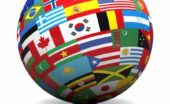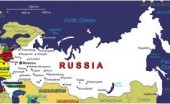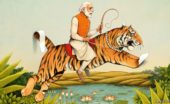Re Ian Bremmer 'Could third-party candidates upend the 2024 US election?' 3 April The current political movement in the USA…
Great Bear Rainforest
Written by Diana Thebaud Nicholson // December 2, 2014 // Canada // Comments Off on Great Bear Rainforest
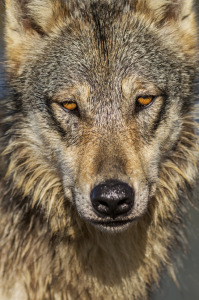 Photographer zooms in on unique coastal wolves of British Columbia
Photographer zooms in on unique coastal wolves of British Columbia
Wolves living on the coastline of the Pacific Northwest are so specialized they are considered an unofficial subspecies of grey wolf. Conservation photographer April Bencze zeroes in on their lives
The coastal wolves of British Colombia found their home on the islands dotting the coastline, and have lived there long enough to be genetically distinct from their mainland relatives. Thriving on salmon and the carcasses of washed-up whales and seals, these wolves offer us a special glimpse into the natural history of the species. Yet despite their lack of threat to the lives or livestock of humans, we still threaten their existence.
Barely in the nick of time, we have figured out the importance of grey wolves to the balance of healthy ecosystems in North America, and conservationists have rallied around the species, doing all that can be done to bring them back to sustainable numbers. But those protections are still hard won and easily lost. In the battles over legislation and protections, should these coastal wolves gain special protections that reflect their unique location and way of life?
Photographer April Bencze has been watching these wolves for over a year alongside photographer Ian McAllister, who is known for his extensive work documenting the lives of these animals. Bencze talked with us about what it is like photographing coastal wolves, what sets them apart from other grey wolves, the threats they face and what can be done to protect them.
15 November
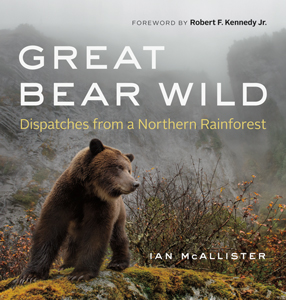 What the endangered Great Bear Rainforest has to teach us
What the endangered Great Bear Rainforest has to teach us
Wolves, salmon and bears can teach us about self-sacrifice and ecology
Book review: GREAT BEAR WILD, by Ian McAllister
In the most haunting scene in conservationist Ian McAllister’s new book, a family of grey wolves chase a pack member, “snarling, biting and pushing” into the cold ocean off B.C.’s central coast. With no escape possible, “he is forced to half dive, half lunge from the cliff into the frothing white surf.” McAllister, also a talented photographer, aches for the animal, whom he has observed since it was a pup. (He’s spent more time with these wolves than his own family; building trust, as he writes, requires a long-term commitment.) Through his grief, McAllister recognizes he is witnessing the most crucial and difficult decision an alpha leader must make: “The pack had reached its carrying capacity, especially as pups would soon be near adult sized and capable of joining the hunt. In wolf society the pack cannot live beyond its means: someone had to go. How this individual was chosen only the pack will ever know.”
The Great Bear Rainforest’s wolves, salmon and iconic, white spirit bears have much to teach us about larger questions of perseverance, self-sacrifice and ecology, McAllister argues. This stunning new book, a collection of extraordinary photographs and personal narrative, is the product of McAllister’s 25 years exploring, researching and campaigning for B.C.’s Great Bear Rainforest, the world’s largest remaining intact temperate coastal rainforest. It is an ode to the forest’s elusive wildlife—the bears, whose brows furrow like humans when they are concerned, the salmon, some of whom bear deep, red scars, “badges of honour,” trumpeting their escape from a whale or bear. It is a clarion call to care.
8 November
One Day in ‘Great Bear Wild’
Soak up the sights, sounds and scents and of salmon season in BC’s fiercest landscape. Excerpt from Ian McAllister’s new book.
(The Tyee) [Editor’s note: Envy the life of Ian McAllister. Beyond possessing great talent as a photographer, he’s made his home in the wildest, fiercest, most beautiful landscape in all the province: the Great Bear Rainforest. Now, a new book opens his remote and mist-cloaked world to the rest of us. Below, an excerpt from a day spent watching hungry bears luxuriate in salmon season.]
Only a week ago, the chatter of wrens, the rhapsodic thrushes, and the soft splash of a salmon tail were the ambient signatures of this rainforest alcove. Everything now is replaced by water — lots of water. A torrent falls from the sky, rushing across beds of moss as the river spills over and through the forest understory. Nothing escapes saturation.
Record-breaking rain hammers the coast. It is the end of September and already we have endured four separate storm events, characterized by winds exceeding 60 knots. Long-time mariners tell me they have recorded the strongest winds on their boats’ anemometers in over 50 years. This kind of weather makes hard work for everyone, whether you’re a bear fishing for salmon or a captain trying to keep your boat and crew safe.
30 October
Great Bear Rainforest deal hinges on First Nations
One of British Columbia’s most remarkable collaborative creations, the Great Bear Rainforest, is close to becoming a reality after more than a decade of negotiations.
But the key architects of the deal say it is in danger of falling apart unless the provincial government addresses the needs of the region’s human residents – primarily First Nations communities.
(Globe & Mail) The pact that ended the war of the woods, which would preserve large swaths of old-growth trees and the home of the Kermode bears on B.C.’s mid-coast, has focused since talks began in 1999 on logging and wildlife.
Now, its approval hinges on a settlement between the province and 27 First Nations who reside within its boundaries on issues ranging from carbon offsets to the grizzly bear hunt.
In January, environmentalists and the forest industry announced they had reached agreement on what can be logged and what must be protected in the Great Bear Rainforest.
It would mean the protection of 70 per cent of the land base in a rugged coastal region that covers 6.4 million hectares of the mid-coast, and the end of a battle marked by logging blockades and a marketing campaign that advocated boycotts of B.C. forest products in Europe and the United States. …
First Nations communities who live in the Great Bear Rainforest are asking for skills-training opportunities, carbon-offset credits and a share of the limited logging activity as part of the “human well-being” component of the deal.
Also entwined in the negotiations are demands to roll back coastal ferry service cuts, and to end trophy hunting of grizzly bears.
21 October
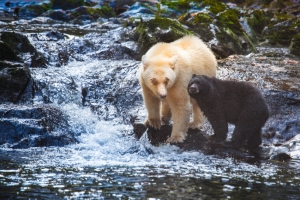 Nineteen year battle over Great Bear Rainforest on brink of peace as momentous deadline approaches
Nineteen year battle over Great Bear Rainforest on brink of peace as momentous deadline approaches
In those early meetings, anger and tension blocked every attempt at progress. But over 19 years, enemies became friends and joined forces to try and save B.C.’s greatest natural treasure.
(Vancouver Observer) After decades of conflict and tense meetings where nerves frayed, news of whether environmental groups, First Nations, the logging industry and government have finally settled the fate of the Great Bear Rainforest may break as soon as Monday.
To fully appreciate what a momentous moment this is for B.C. and those facing environmental conflicts around the world, one needs to start at the beginning.
2012
23 November
Unfinished Business in Great Bear Rainforest
BC’s government is slow to implement remaining milestones of the original, heralded agreement.
(The Tyee) As you contemplate the fall storms, spare a thought for the Great Bear Rainforest, where the future is still uncertain, the horizon is not serene but troubled by spectres of tsunami debris and oil tankers, and some of the forests are still being logged at excessive rates. The Great Bear Rainforest agreements of 2006 have still not been fully implemented.
The provincial government, First Nations, industry and conservation organisations have been working for years to make the Great Bear vision a reality but since 2009 progress has slowed and now seems to have been stalled by a lack of government and industry leadership. In 2006 all parties agreed to support the transition to a conservation economy, and to designate 70 per cent of natural, background levels of old-growth forest off-limits to logging. In 2009 all parties agreed to an interim compromise: meet a 50 per cent milestone and move to the 70 per cent goal no later than 2014.
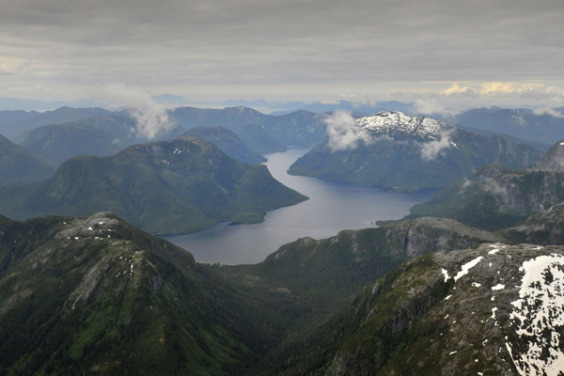
Aerial view of Great Bear Rainforest looking north over Foch-Gittoyess, B.C. Photo by A.S. Wright.
11 June
Great Bear Forest to Be Massive Carbon Offset Project
How eight coastal First Nations will harvest money from trees without saws.
An unprecedented new carbon offset project, among the largest ever conceived, promises industrial logging will not return.
Beginning this year, the Gitga’at and seven neighbouring First Nations (see sidebar “The Coastal First Nations”) will “harvest” one million tonnes of “carbon offsets” from the Great Bear Rainforest, sharing millions of dollars in revenue with the province over the next century.
That harvest was created, counterintuitively, by putting vast areas of the Great Bear off-limits to industrial-scale logging. By leaving more trees standing, the First Nations are able to sell certificates attesting to the increasing volume of carbon stored in their roots, leaves and fibre. Purchasers may claim the carbon thereby removed from the atmosphere to offset their own direct greenhouse emissions. …
The pending carbon deal is a precedent that could open the floodgates for other First Nations, private companies, and community forests to profit from a uniquely 21st century forest resource: the carbon held in B.C.’s estimated 55 million hectares of forest, packaged into tradeable financial instruments and sold as a commodity around the world.
Given that forests and the soil beneath them are responsible for almost all of the world’s land-based carbon sequestration, attempts to put a dollar value on forest carbon are an important step forward in the fight against climate change, albeit steps beset by hurdles and shackling complications.
The Great Bear project is among the biggest forest-carbon projects every conceived, in the same league as the 1.8 million tonne Juma Reserve in the Brazilian Amazon.
2011
Kermode Bear
In a moss-draped rain forest in British Columbia, towering red cedars live a thousand years, and black bears are born with white fur.
(National Geographic) Neither albino nor polar bear, the spirit bear (also known as the Kermode bear) is a white variant of the North American black bear, and it’s found almost exclusively here in the Great Bear Rainforest. At 25,000 square miles—one and a half times as big as Switzerland—the region runs 250 miles down Canada’s western coast and encompasses a vast network of mist-shrouded fjords, densely forested islands, and glacier-capped mountains. Grizzlies, black bears, wolves, wolverines, humpback whales, and orcas thrive along a coast that has been home to First Nations like the Gitga’at for hundreds of generations. It’s a spooky, wild, mysterious place: There are wolves here that fish. Deer that swim. Western red cedar trees that have stood a thousand years or more. And a black bear that is white.
